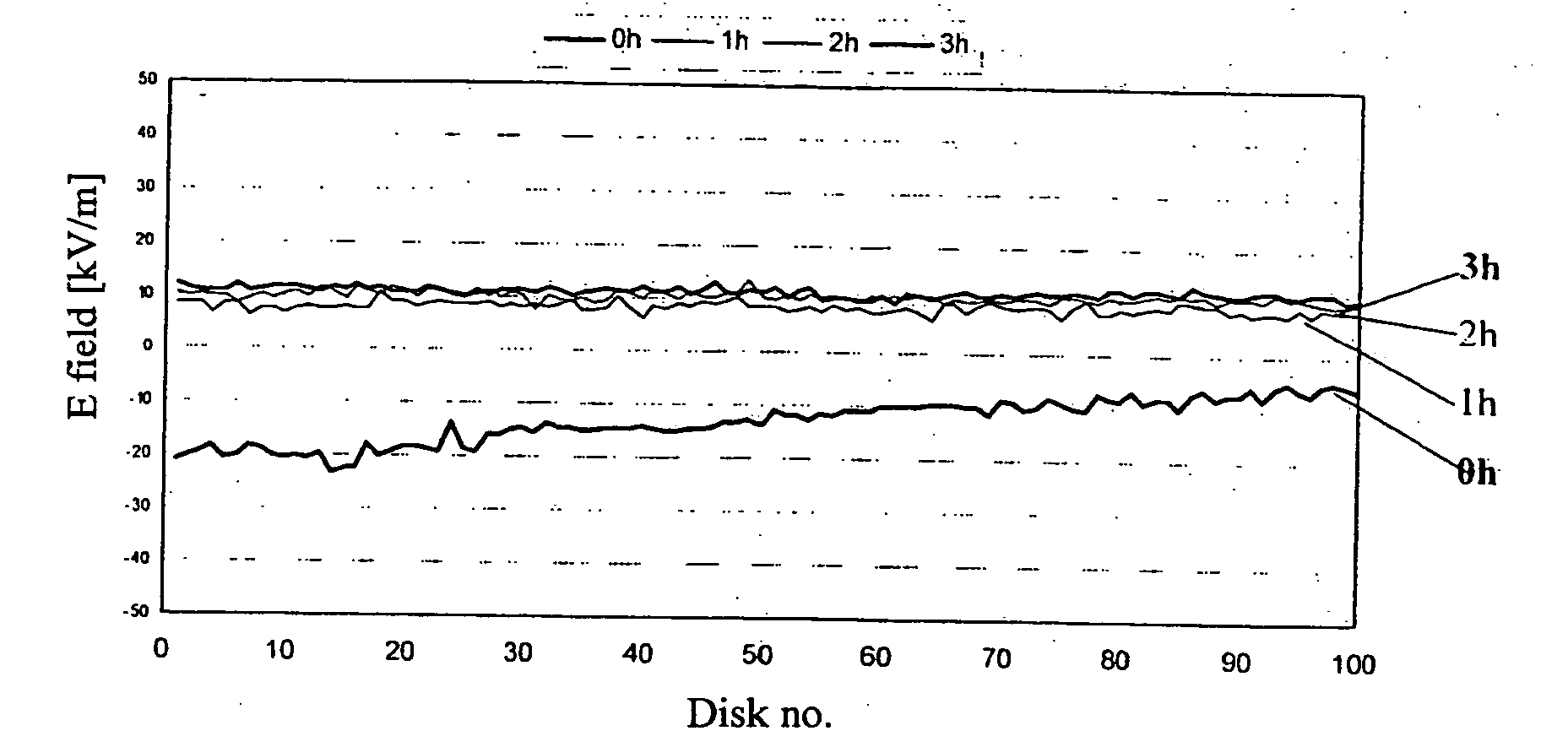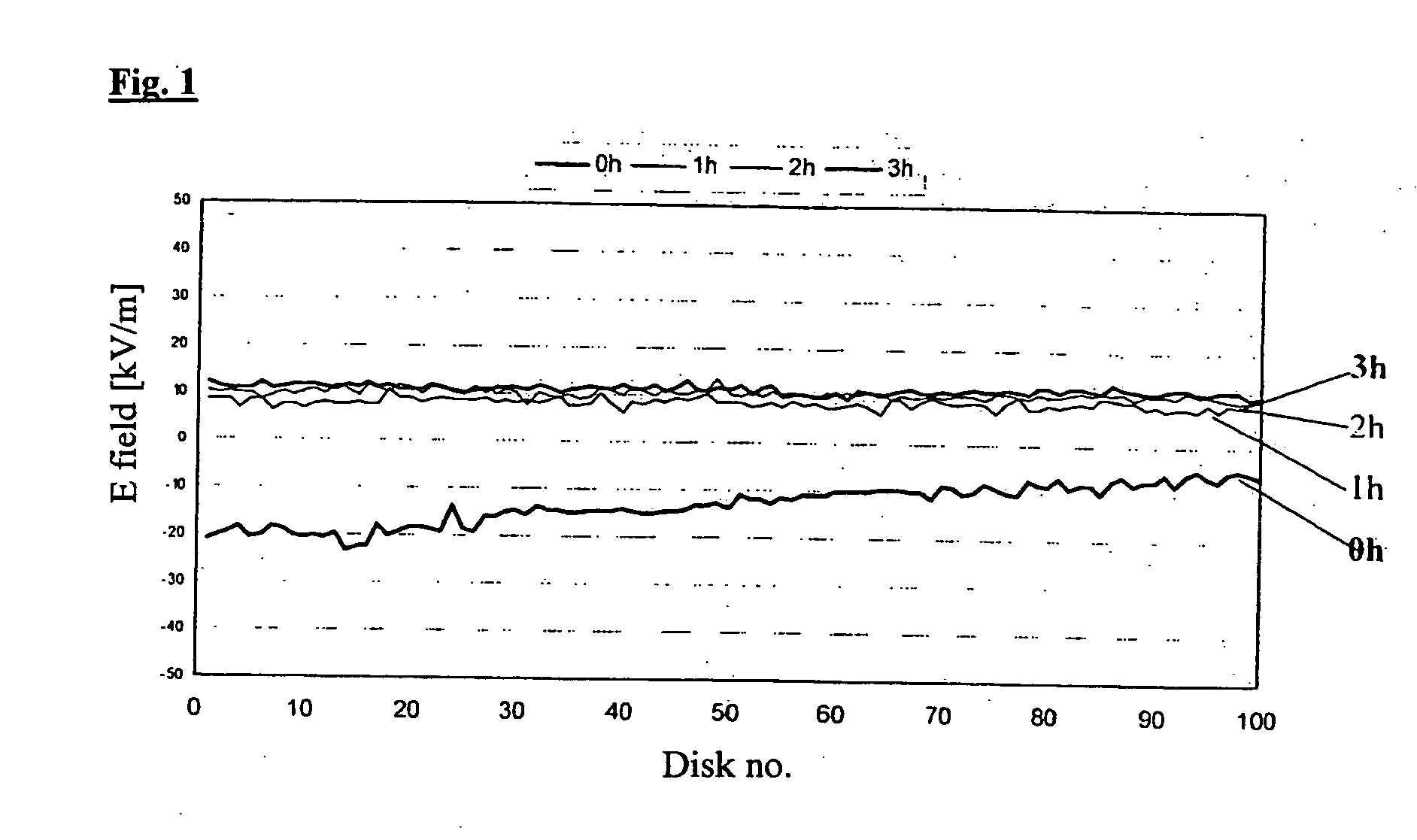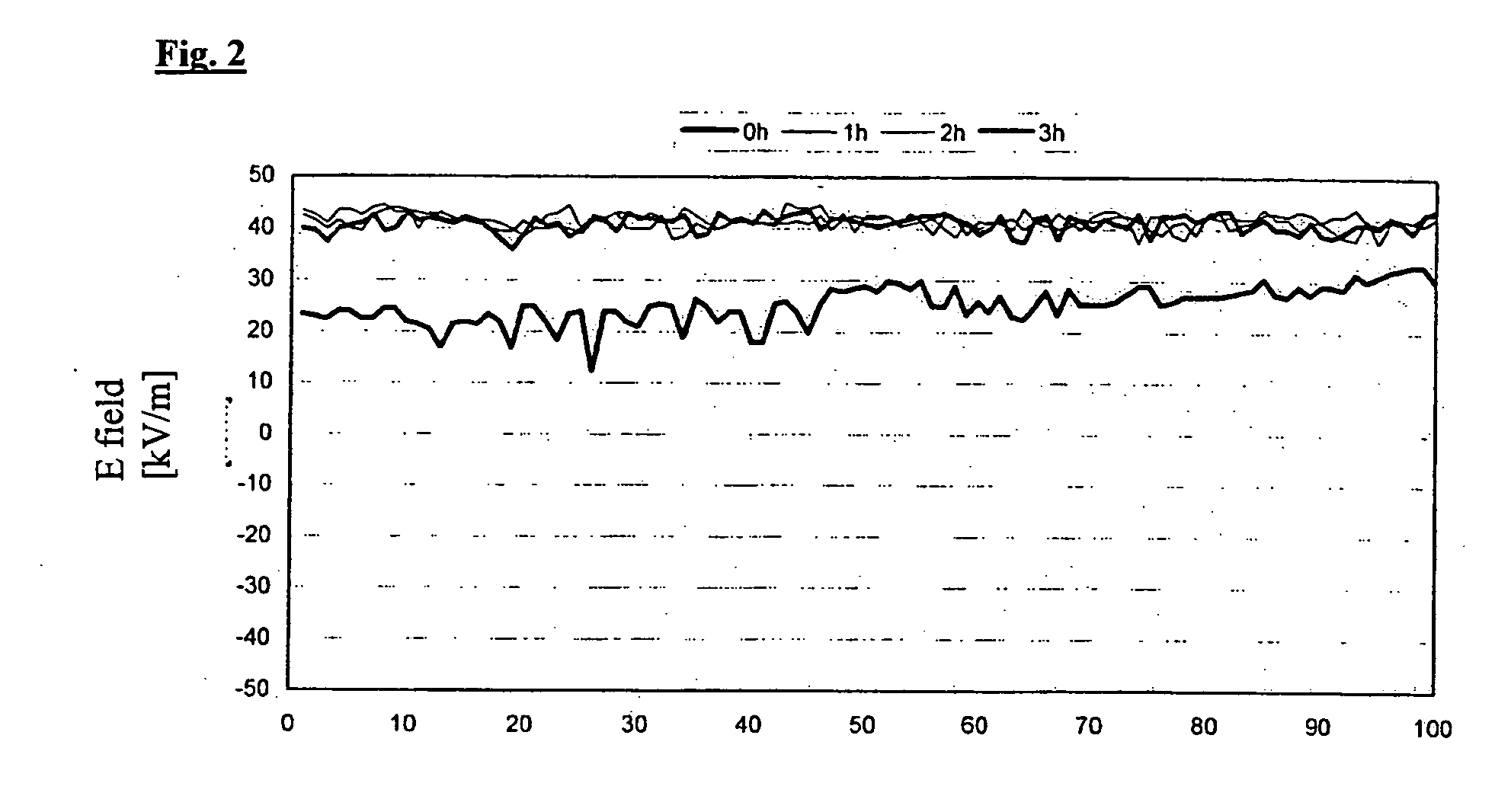Substrate materials for transparent injection-molded parts
- Summary
- Abstract
- Description
- Claims
- Application Information
AI Technical Summary
Benefits of technology
Problems solved by technology
Method used
Image
Examples
example 1
[0102] The polycarbonate was prepared by the known phase interface process. A continuous process was used.
[0103] The bisphenolate solution (bisphenol A; alkali content 2.12 mol NaOH / mol BPA) was fed into the reactor at 750 kg / h (14.93 wt. %), the solvent (methylene chloride / chlorobenzene 1:1) at 646 kg / h and the phosgene at 56.4 kg / h and the components were reacted. The temperature in the reactor was 35° C. Sodium hydroxide solution (32 wt. %) was also metered in at 9.97 kg / h. In the course of the condensation reaction, a second amount of sodium hydroxide solution (32 wt. %) was metered in at 29.27 kg / h, as well as a solution of chain terminators (11.7 wt. % tert-butylphenol in methylene chloride / chlorobenzene 1:1) at 34.18 kg / h. Thereafter, N-ethylpiperidine, dissolved in methylene chloride / chlorobenzene (1:1; 2.95 wt. % N-ethylpiperidine) was fed in at 33.0 kg / h as a catalyst. The phases were separated and the organic phase washed once with dilute hydrochloric acid and five times...
example 2
Comparison Example
[0111] The polycarbonate was prepared as described in Example 1. However, the bisphenolate solution (bisphenol A) was fed into the reactor at 750 kg / h (14.93 wt. %), the solvent (methylene chloride / chlorobenzene 1:1) at 646 kg / h and the phosgene at 58.25 kg / h. Sodium hydroxide solution (32 wt. %) was likewise metered in at 12.34 kg / h. The second amount of sodium hydroxide solution was metered at 36.20 kg / h; the amount of chain terminators was introduced at 34.18 kg / h at the concentrations stated in Example 1. The rate of introduction of catalyst was 33 kg / h. Working up was carried out as described in Example 1.
[0112] The granules obtained were dried for 6 hours and then processed to disks on a Netstal Discjet injection molding machine (see above) over a cycle time of 4.4 seconds under the abovementioned parameters. An audio stamper was used as the template. The electrical field of each of the first 100 disks was measured with a field meter as described above. Aft...
PUM
| Property | Measurement | Unit |
|---|---|---|
| Length | aaaaa | aaaaa |
| Time | aaaaa | aaaaa |
| Distance | aaaaa | aaaaa |
Abstract
Description
Claims
Application Information
 Login to View More
Login to View More - R&D
- Intellectual Property
- Life Sciences
- Materials
- Tech Scout
- Unparalleled Data Quality
- Higher Quality Content
- 60% Fewer Hallucinations
Browse by: Latest US Patents, China's latest patents, Technical Efficacy Thesaurus, Application Domain, Technology Topic, Popular Technical Reports.
© 2025 PatSnap. All rights reserved.Legal|Privacy policy|Modern Slavery Act Transparency Statement|Sitemap|About US| Contact US: help@patsnap.com



